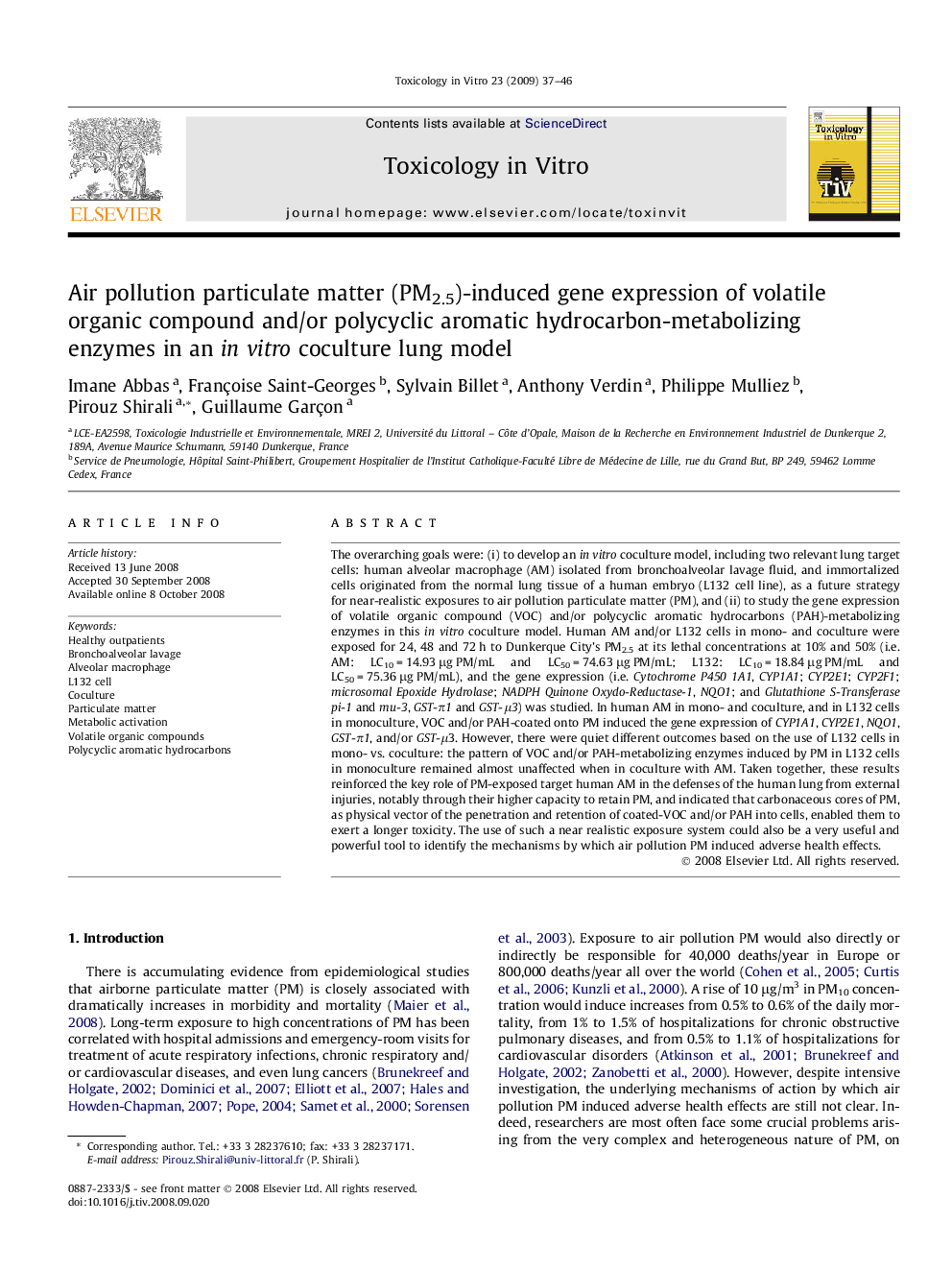| Article ID | Journal | Published Year | Pages | File Type |
|---|---|---|---|---|
| 2603265 | Toxicology in Vitro | 2009 | 10 Pages |
The overarching goals were: (i) to develop an in vitro coculture model, including two relevant lung target cells: human alveolar macrophage (AM) isolated from bronchoalveolar lavage fluid, and immortalized cells originated from the normal lung tissue of a human embryo (L132 cell line), as a future strategy for near-realistic exposures to air pollution particulate matter (PM), and (ii) to study the gene expression of volatile organic compound (VOC) and/or polycyclic aromatic hydrocarbons (PAH)-metabolizing enzymes in this in vitro coculture model. Human AM and/or L132 cells in mono- and coculture were exposed for 24, 48 and 72 h to Dunkerque City’s PM2.5 at its lethal concentrations at 10% and 50% (i.e. AM: LC10 = 14.93 μg PM/mL and LC50 = 74.63 μg PM/mL; L132: LC10 = 18.84 μg PM/mL and LC50 = 75.36 μg PM/mL), and the gene expression (i.e. Cytochrome P450 1A1, CYP1A1; CYP2E1; CYP2F1; microsomal Epoxide Hydrolase; NADPH Quinone Oxydo-Reductase-1, NQO1; and Glutathione S-Transferase pi-1 and mu-3, GST-π1 and GST-μ3) was studied. In human AM in mono- and coculture, and in L132 cells in monoculture, VOC and/or PAH-coated onto PM induced the gene expression of CYP1A1, CYP2E1, NQO1, GST-π1, and/or GST-μ3. However, there were quiet different outcomes based on the use of L132 cells in mono- vs. coculture: the pattern of VOC and/or PAH-metabolizing enzymes induced by PM in L132 cells in monoculture remained almost unaffected when in coculture with AM. Taken together, these results reinforced the key role of PM-exposed target human AM in the defenses of the human lung from external injuries, notably through their higher capacity to retain PM, and indicated that carbonaceous cores of PM, as physical vector of the penetration and retention of coated-VOC and/or PAH into cells, enabled them to exert a longer toxicity. The use of such a near realistic exposure system could also be a very useful and powerful tool to identify the mechanisms by which air pollution PM induced adverse health effects.
